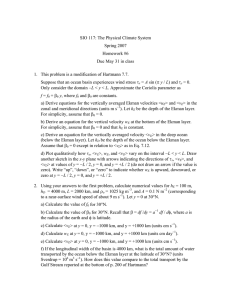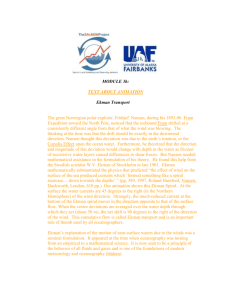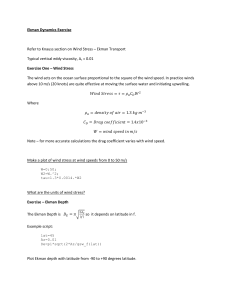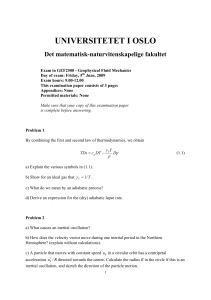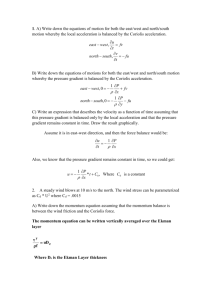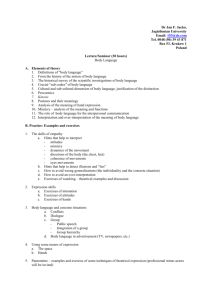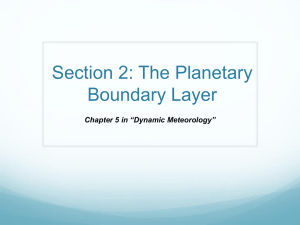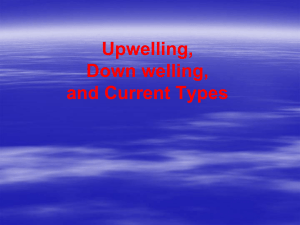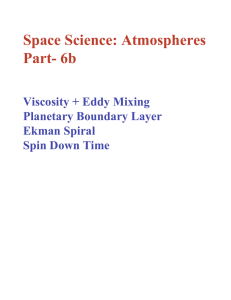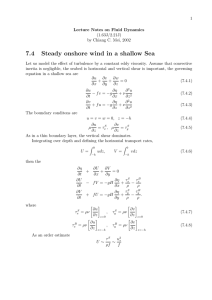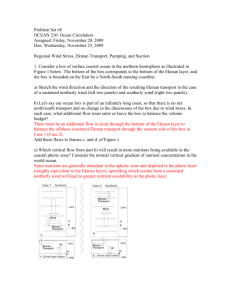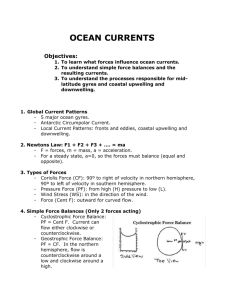The above figure shows sea-level height in cm in the Gulf of Mexico
advertisement
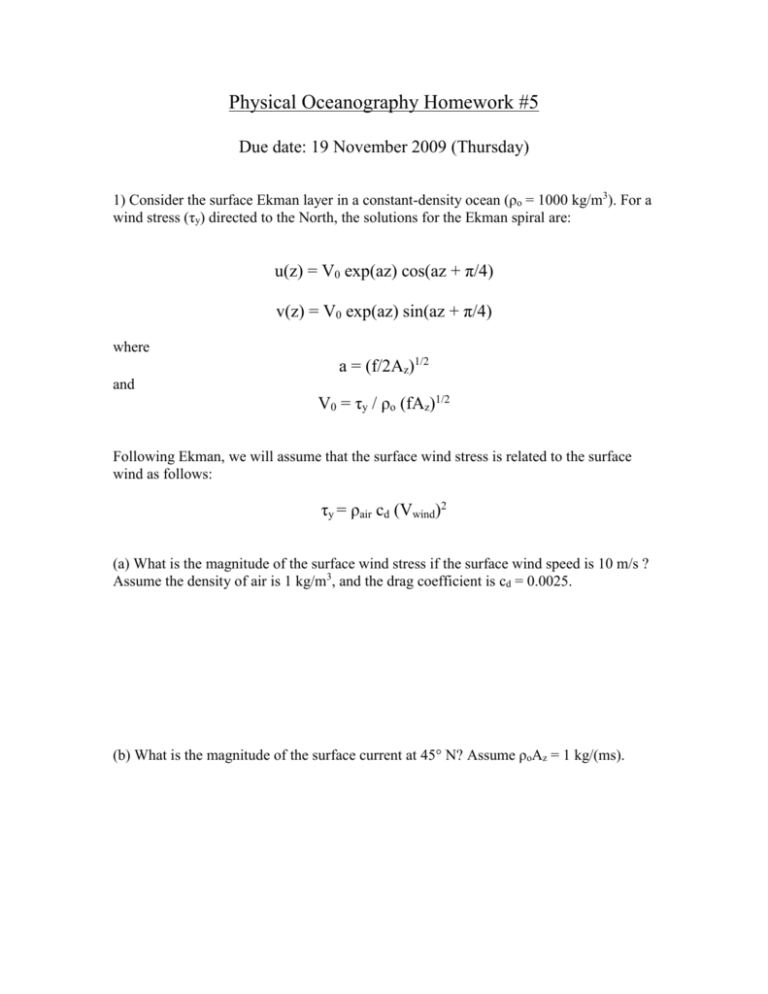
Physical Oceanography Homework #5 Due date: 19 November 2009 (Thursday) 1) Consider the surface Ekman layer in a constant-density ocean (ρo = 1000 kg/m3). For a wind stress (τy) directed to the North, the solutions for the Ekman spiral are: u(z) = V0 exp(az) cos(az + π/4) v(z) = V0 exp(az) sin(az + π/4) where a = (f/2Az)1/2 and V0 = τy / ρo (fAz)1/2 Following Ekman, we will assume that the surface wind stress is related to the surface wind as follows: τy = ρair cd (Vwind)2 (a) What is the magnitude of the surface wind stress if the surface wind speed is 10 m/s ? Assume the density of air is 1 kg/m3, and the drag coefficient is cd = 0.0025. (b) What is the magnitude of the surface current at 45° N? Assume ρoAz = 1 kg/(ms). (c) Calculate the magnitude and direction of the current for each of the following depths: z = 0, -π/6a, -π/4a, -π/3a, -π/2a, -3π/4a, -π/a. Make an x-y plot of the current vectors. (d) Define and compute the depth of frictional influence (DE). 0.1 Pa 100 km A 0.1 Pa B 2) The above figure shows a hypothetical wind stress field that varies linearly from -0.1 Pa to 0.1 Pa over 100 km. The Coriolis frequency here is 10-4 s-1. a) Sketch arrows on the diagram indicating the direction and relative magnitude of the Ekman transport associated with this variable wind stress field. b) Estimate the volume transport (m3/s) across a 100 km segment of the line AB. c) Estimate the vertical velocity at the base of the Ekman layer (Hint derive an expression for the north/south variation in Ekman transport associated with the variable wind stress field and use the continuity equation to estimate the vertical velocity at the bottom of the Ekman layer. Assume that the vertical velocity at the surface is zero) d) Both of the winds stress fields in the figure below will produce convergent Ekman flows and cause the surface layer to thicken. However, one of them will produce sloping isopycnals (and thus geostrophic flow below). Which stress field will produce sloping isopyncals and why? 0.1 Pa 0.2 Pa 200 km A 0.2 Pa B 100 km A 0.1 Pa B
